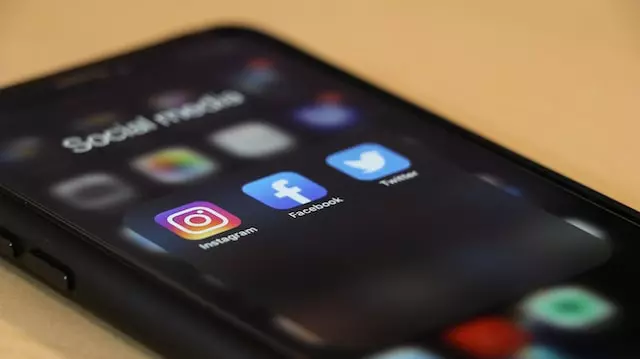Influencer Marketing: How to Use it and How it Can Benefit Your SEO
Get a free consultationYou may or may not have heard of influencer marketing before, but even if you haven’t, you probably know what it is!
Influencer marketing involves noteworthy online personalities marketing a business’s products or services to their followers in exchange for payment or free products.
When it’s the right matchup, influencer marketing can be a win for everybody involved.
Businesses get direct exposure to interested audiences, influencers make a living promoting products they believe in, and consumers get recommendations and discount codes from public figures they trust.
But before you go thinking that influencer marketing can set your business right down on easy street, there’s actually a process you need to follow for identifying and working with influencers.
If everyone could do it, we wouldn’t need to sit here and talk at length about the right approaches to take.
You need an influencer marketing strategy that works for your business model and that will present you as an attractive partner to influencers.
If you’re ready to dig into it, then, let’s explore the ever-growing, multi-billion-dollar industry of influencer marketing.
What Is Influencer Marketing?
Influencer marketing is the process of social media influencers promoting commercial brands to their followers and earning payment in return from those companies.
It’s a type of social media marketing in the same way that running Facebook ads is.
The only difference is that, with influencer marketing, brands employ people rather than platforms to get the word out about themselves.
Companies typically select influencers to work with based on their audience, reach, and market niche, or area of expertise.
The relationship has to benefit both parties.

Take this example to see influencer marketing at work.
Say a software company has a new antivirus program that it wants to market.
The company assembles an influencer marketing offer and approaches a tech-focused YouTuber who has 1.2 million subscribers and regularly earns at least 60,000 views per video.
If the influencer will take 90 seconds in a video to promote the antivirus software to his subscribers, the company will provide him with the program for free and pay him a commission for every sale made from the promotion.
Brands can typically pay for promotion by the unit, meaning by the social media post or YouTube video.
On viewers’ end of things, they will see the YouTuber do his regular intro, interrupt things for 90 seconds to market the software, and then get on with the video.
That’s a perfect influencer marketing scenario and is often how the process works.
The important point to remember is that the setup benefits everyone involved:
- The YouTuber gets a free product and commissions
- The company gets exposure to a large, interested audience
- The viewers get a product recommendation from someone they know and trust
As you can see, influencer marketing is as much a commercial exchange as any other kind of online advertising, but with more of a human touch involved since businesses are dealing with people rather than faceless ad platforms to promote themselves.
One other point to make about influencer marketing here: it’s distinct from celebrity endorsements.
Endorsements are what you see when your favorite athlete appears in commercials for shoes, deodorant, or insurance.
But those are simply advertisements.
Conversely, social media influencers are meant to foster engagement and communication from their followers.
Influencers essentially risk their reputations whenever they recommend products and services, so they always want to make sure that they are genuinely helping their followers by marketing something.
Celebrities who endorse a product collect their paychecks but do not engage with audiences in the process.
Where Is Influencer Marketing Today?
Before we move on to the types of influencers and the right influencer marketing strategies for your business, let’s step back and examine where influencer marketing stands today as an industry.
Spoiler alert: it’s growing.
Here are some statistics on that, from Statista, Influencer Marketing Hub, and Entrepreneur magazine:
- Between 2020 and 2021, the global influencer marketing industry grew by 42%, from $9.7 billion to $14 billion
- The industry was predicted to reach $16.4 billion by the end of 2022
- 79% of brands preferred Instagram as their influencer marketing channel in 2021; Facebook, TikTok, and YouTube followed after that
- 54.1% of commercial brands who partner with influencers manage ecommerce stores
- 68% of brands that employ influencer marketing now intend to budget for it in the next year
- Influencers generate an average of $6.50 for every $1 that brands spend, for an ROI of 550%
It’s fair to say that influencer marketing is a more-than-worthwhile venture in the world of digital marketing.
However, like any multi-billion-dollar industry, you don’t get a piece of the profits just because you jumped into it.
There are right and wrong ways to go about it.
But, before we get into influencer marketing strategies, we have to talk about the different types of influencers that are out there.

Types of Social Media Influencers
Social media influencers are typically divided into categories by their follower or subscriber count.
Those audience numbers essentially determine everything that follows in influencer marketing, including the costs of brands doing business with the influencers themselves.
Here’s how the types of social media influencers break down:
Nano-Influencers
As their name suggests, nano-influencers are the smallest group on this list.
They are classified as influencers having between 1,000 and 10,000 followers.
In the grand scheme of social media audiences, even 10,000 followers is not a huge amount today, but nano-influencers tend to hold more sway over their smaller audiences.
Nano-influencers with only 1,000 to 5,000 followers have an average 4% engagement rate on their posts, which is a decent number.
Micro-Influencers
Micro-influencers are next up on the influencer list, with a follower count between 10,000 and 50,000.
Most businesses looking to get into influencer marketing like the good mix that is present with micro-influencers: a relatively small but more engaged audience, with engagement rates at about 6%.
Mid-Tier Influencers
Next up, we have mid-tier influencers, who have between 50,000 and 500,000 followers.
It’s here at the mid-tier influencer level that you start to see the counterintuitive trend in engagement rates as you ascend the influencer ladder: as followers increase, their rates of engagement tend to decrease.
From here on out, influencers usually have engagement rates somewhere on the 1% spectrum.
You could explore a whole host of reasons for why that is.
A reasonable assertion is that audiences necessarily become more varied as they grow.
Unlike the 5,000-strong audience of a nano-influencer, a mid-tier influencer’s 500,000 followers will tend to be more scattered in their interest in promotional products or content.
This doesn’t mean that your influencer marketing efforts are worthless at the mid-tier influencer level, since you still have the chance to reach half a million people.
Your product, and the influencer’s content, just needs to be relevant and targeted to the right customers.
Macro-Influencers
Now we’re getting into the bigger leagues: macro-influencers have between 500,000 and one million followers.
That’s a lot of social media users following one person.

It makes sense, then, that many macro-influencers are known figures outside of social media.
They could be actors, musicians, or prominent business leaders.
In other words: celebrities.
Once again, the engagement rate on promotional posts is in the 1% area, though the potential audience is obviously huge.
Mega-Influencers
The largest category of influencers is the mega-influencers, who have more than a million followers.
For this kind of audience, influencers usually have to have some sort of mainstream celebrity status.
Think Taylor Swift and Kim Kardashian (not that they’re going to take just any old product-promotion request, let’s be honest).
One perspective to keep in mind with even the smallest mega-influencers is that even a 1.23% engagement rate from an audience of one million translates to 12,300 people.
That’s engagement, though. Remember that.
Engagement means liking, commenting on, and resharing content.
It does not necessarily mean buying the thing the influencer is helping to sell.
Still, the opportunity is there and represents thousands of people the brand wouldn’t otherwise reach.
How Much Do Influencers Charge Per Post?
Now that we’ve gotten the lowdown on social media influencers and where they stand with audience numbers and post engagement rates, let’s move into how influencer marketing actually works.
Put simply, influencers promote brands that speak to their niche and fan base and charge businesses a flat rate per post or video.
And, as you’d expect, the rates change with the influencer’s follower count and the social media platform.
Here are a few charts that break down how much influencers charge for brand promotion on various platforms, according to Influencer Marketing Hub.
Instagram Influencer Cost Per Post
| Influencer Type | Cost Per Post |
|---|---|
| Nano-influencers | $10 to $100 |
| Micro-influencers | $100 to $500 |
| Mid-tier influencers | $500 to $5,000 |
| Macro-influencers | $5,000 to $10,000 |
| Mega-influencers |
$10,000+ |
Facebook Influencer Cost Per Post
| Influencer Type | Cost Per Post |
|---|---|
| Nano-influencers | $25 to $250 |
| Micro-influencers | $250 to $1,250 |
| Mid-tier influencers | $1,250 to $12,500 |
| Macro-influencers | $12,500 to $25,000 |
| Mega-influencers |
$25,000+ |
YouTube Influencer Cost Per Video
| Influencer Type | Cost Per Video |
|---|---|
| Nano-influencers | $20 to $200 |
| Micro-influencers | $200 to $1,000 |
| Mid-tier influencers | $1,000 to $10,000 |
| Macro-influencers | $10,000 to $20,000 |
| Mega-influencers |
$20,000+ |
TikTok Influencer Cost Per Post
| Influencer Type | Cost Per Post |
|---|---|
| Nano-influencers | $5 to $25 |
| Micro-influencers | $25 to $125 |
| Mid-tier influencers | $125 to $1,250 |
| Macro-influencers | $1,250 to $2,500 |
| Mega-influencers |
$2,500+ |
So those are the numbers you’re working with when you take the influencer marketing route for your online advertising.
Obviously, every influencer will be different, and some might even fall outside of these ranges.
But you can see that, starting with the mid-tier influencers, we’re talking about serious expenses.
Now, remember that you’re getting something for that money.
Within the obvious exposure to a large and interested audience, your brand gets represented in a positive light through the influencers’ high-quality content.
You’ll generally notice that the aesthetic and overall caliber of a promotional post increases with the influencer type.
As these figures transition slowly from micro-influencers to mega-influencers, you may see they start to use better cameras and brand themselves in certain ways.
Maybe they always use a certain filter, or their posts feature lots of white and pink.
That’s all to say that, the bigger the influencer, the more professional their content looks, and the more it costs to work with them.
However, if you have the budget for it, influencer marketing remains an effective route for increasing your brand awareness and improving your SEO by earning more web traffic.
How to Form Your Influencer Marketing Strategy
By this point, you know what influencer marketing is, the basic concepts of how it works, and the range of what you expect to pay for your campaigns.
What you still may not know is how exactly to get started in the influencer marketing game.
Do you just slide into an influencer’s DMs and offer some cash and a product URL?
Certainly not.
You have to remember, if these are professional influencers, then they do this for a living.
Treat them like any other business associate.

With all that said, forming relationships with social media influencers can be a vital part of your business’s marketing strategy.
Here’s how to do it.
1.) Research the Influencer Market
Here’s the straight story on researching influencers: as we said above, this is more complicated than just reaching out to a figure in your niche and throwing some cash at a few posts.
We talked above about all the types of influencers out there, but consider that it can take literally years for an influencer even to climb out of the nano-influencer phase and really start building an audience.
Even after that, people could spend even longer as micro-influencers.
Many don’t even reach the mid-tier stage.
The point is that becoming an influencer is hard work, and reputation matters.
Influencers won’t simply take any offer you throw at them and do it for money.
The trust of their followers is more important to them.
As you research the influencers that are out there in your niche, also consider the primary platform they use.
If they’re all about Instagram, then your business would need to have a presence there, too, and ideally well before this moment.
2.) Know What You Want Your ROI to Be
In the end, influencer marketing is another arm of your overall paid media strategy.
And as with anything in paid media or marketing in general, you need to know approximately what you can expect your ROI to be.
You can use the charts above or just reach out to a potential influencer partner for post prices, but then factor in audience size and engagement rates, as well.
As you work through the math and get closer to setting a budget, you may find that your calculations lead you to a different category of influencer than what you had decided earlier.
That’s okay!
Remember, what you gain in follower count you usually lose in engagement rate.
Bigger is not always better.
But whatever numbers you decide on, find ROIs that work for you, and of course determine how you’re going to track that during the campaign.
3.) Identify What You’re After
If you don’t know the goals for your influencer marketing campaign, then you aren’t ready to contact anyone yet.
The title of this post mentions how working with influencers can benefit your website’s SEO.
That’s true, so long as you set the right objectives for yourself.
Let’s say you run a blog site and make your money through selling ad space.
But your overall traffic has been suffering lately, and it isn’t just seasonal.
So, you decide you need to start getting more exposure to the right people, and this travel influencer seems like a good fit for your brand.
Don’t go to the influencer and say your goal is to boost traffic.
Well, boost traffic how? What types of people? To which content of yours?
Your overarching goal may be to generate more traffic, but it will pay to be specific with influencers because they need to know exactly what they’re doing in their posts for you.
So make a subgoal for your big goal.
If the most important audience for you is the 18-to-34 demographic, plan to convey that to your eventual influencer, because he or she might have analytics suggesting that most of their audience is in that age group.
Knowing what you want helps the influencers to know how to tailor their posts to the right segments of their followers.
4.) Master the Art of the Reachout
When it comes time to contact an influencer, you really have to master the art of that first communication.
It’s kind of like writing the subject line of a cold email: you can get opens, but only if you know your audience and structure everything right.

With nano- and micro-influencers, all you might have to do is send them a DM that opens the dialogue about a paid partnership.
As you go up the influencer ladder, though, as with mid-tier or macro-influencers, you may start encountering preferred contact methods.
They may leave a link to a website that is meant for business requests, or if they’re really big, they might even work through a talent agency that manages their affairs.
Now, keep in mind that influencers are dogged by messages all the time, from real people and spam accounts.
Many of the real people just want something from them for free.
In turn, the influencers are probably more used to brushing off requests than actually looking into them.
To get around that, you can craft pitches that are personalized to the influencer and that put their needs before yours.
Suggest that you have something that you believe would be interesting and helpful to their followers and that fits perfectly into their own brand and market niche.
Remember: influencers ultimately want to be contacted, or they wouldn’t do this for a living.
But to make yourself stand out from the crowd among all the others who want a piece of the action, make your pitch about the influencer and their followers rather than about what you need.
5.) Monitor Your Progress
Once you’ve inked a deal with the influencer, gone over all the specifics of the campaign, and started to see the influencer get your products or other content out there, you have to keep an eye on everything.
Normally, brands will have given the influencer points to hit in each post, such as mentioning this blog post or that product, along with links.
You can track engagement on such things by adding UTM codes to the URLs that the influencer is promoting so you can see that the traffic is coming from there.
Brands may also instruct the influencer to use specific hashtags in their promotional posts, and those hashtags can be another way to track engagement on the posts.
Check the tags out on Instagram or Twitter or whatever platform you’re on, and see what the conversation is like around them.
Make sure that the influencer’s messaging around your content is staying true to the meaning of the hashtags and the identity of your brand.
You should also choose regular check-in times to see how your influencer marketing campaign is going after, say, 30 days, 60 days, or 90 days.
It isn’t unusual to want to tweak things about the campaign along the way.
As long as you have a good, open relationship with your influencer, and those kinds of requests aren’t a big deal, this should be a relatively easy part of the process.
Remember, you can plan a campaign like this for months and still have to adjust along the way because of what you’ve learned.
How Does All This Influencer Marketing Help Your SEO?
Now that you know all about influencer marketing on its own, you likely want to know how doing it can help your website’s SEO.
The content that influencers post in support of your website and its products earn you backlinks, which are a trust signal for Google to know that you are authoritative in your niche.
Keep in mind that influencers can be found across the Internet, not just on social media.
That’s important because backlinks only count toward your link profile if they come from actual domains, as opposed to social media platforms.
However, influencers could be bloggers with their own websites, and backlinks from them can help you in big ways.

Even if your influencers are on social media only, though, social signals play an indirect role in Google’s estimation of your website’s importance.
Social shares get your content more engagement, and that’s what directly affects your Google rankings.
Often, it isn’t enough to rely on your natural Google rankings alone to get traffic; your content might need a boost now and then.
That’s where influencers sharing your content can help.
Your SEO will thank you.
Let LSEO Help with Your Influencer Marketing Campaign
You’ve probably seen in this post that there’s so much more to influencer marketing than meets the eye.
Developing your strategy may take some time, and you may not be fully prepared to take on the task.
LSEO’s social media experts are happy to support you in your efforts to bring influencers into your paid media marketing fold.
With our years of experience helping enterprise businesses to succeed in the digital space, we are uniquely positioned to help your business move upstream through social media and SEO.
Reach out to us to get started!
